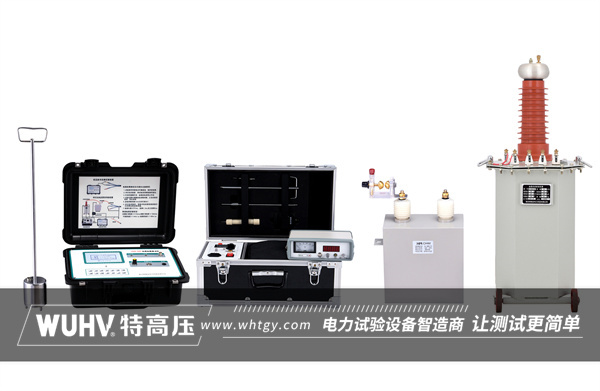The cable fault tester under Wuhan UHV can help many power workers conduct various power tests more conveniently.

The method for determining cable faults is a systematic process aimed at quickly and accurately locating and identifying the fault points in the cable system. The following are several main judgment methods, and they will be explained in detail with relevant information:
Visual inspection method:
Method: Check the appearance and insulation layer of the cable through human vision and touch, and observe whether there is any damage, deformation, burning, or other phenomena.
Features: Simple and easy to implement, able to quickly and preliminarily determine whether there is a fault in the cable.
Voltage test:
Method: Use a voltmeter or multimeter to measure the voltage at both ends of the wire and determine if there is an open circuit fault.
Attention: Ensure the accuracy and reliability of the testing equipment to avoid misjudgment.
Insulation test:
Method: Use an insulation resistance tester to measure the insulation resistance of the wire and determine whether the insulation performance of the cable is good.
Caution: A low insulation resistance value may indicate a ground fault or low resistance fault in the cable.
Bridge method:
Method: By comparing the resistance values at both ends of the cable, faults can be found, which is suitable for searching for short circuit and open circuit faults.
Characteristics: For faults where there is a direct short circuit between cable cores or where the contact resistance at the short circuit point is less than 1 Ω, the judgment error is relatively small.
Pulse reflection method:
Method: Using the principle of high-frequency pulse signals propagating and reflecting in cables to locate faults, the location of the fault point is calculated by measuring the time and velocity of the reflected signal.
Features: Suitable for various types of cable faults, with high accuracy and sensitivity.
Sound measurement method:
Method: Based on the sound of discharge from the faulty cable, it is found that the flashover discharge of the insulation layer by the high-voltage cable core is more effective.
Features: By using audio amplification equipment to search for abnormal sounds along the cable path, the fault point can be accurately located.
Capacitive current measurement method:
Method: Based on the capacitance distribution characteristics between cable core wires and between core wires and ground, the determination of cable core wire breakage faults is very accurate.
Characteristic: By measuring the ratio of capacitance current, the distance of the disconnection point can be calculated.
Zero potential method (potential comparison method):
Method: Connect the faulty core wire of the cable in parallel with a comparison wire of equal length, and determine the location of the fault point by measuring the point where the potential difference is zero.
Features: Suitable for short cable core to ground faults, easy and accurate measurement.
When determining cable faults, the following points should also be noted:
Use professional equipment: In order to improve the accuracy of cable fault diagnosis, it is recommended to use professional cable fault testers and other equipment.
Comprehensive application of multiple methods: In practical operation, the above multiple methods can be comprehensively applied to find cable faults, in order to improve the efficiency and accuracy of fault finding.
Consider environmental factors: During the process of cable fault diagnosis, it is necessary to consider the impact of environmental factors on measurement results, such as soil moisture, temperature, and cable laying conditions.
Follow safety regulations: Ensure that appropriate safety measures are taken during high-voltage testing, such as wearing personal protective equipment, setting up safety warning signs, etc., to ensure the safety of surrounding personnel and equipment.
In summary, there are various methods for determining cable faults, and it is necessary to choose appropriate methods for fault diagnosis and location based on specific circumstances.



















